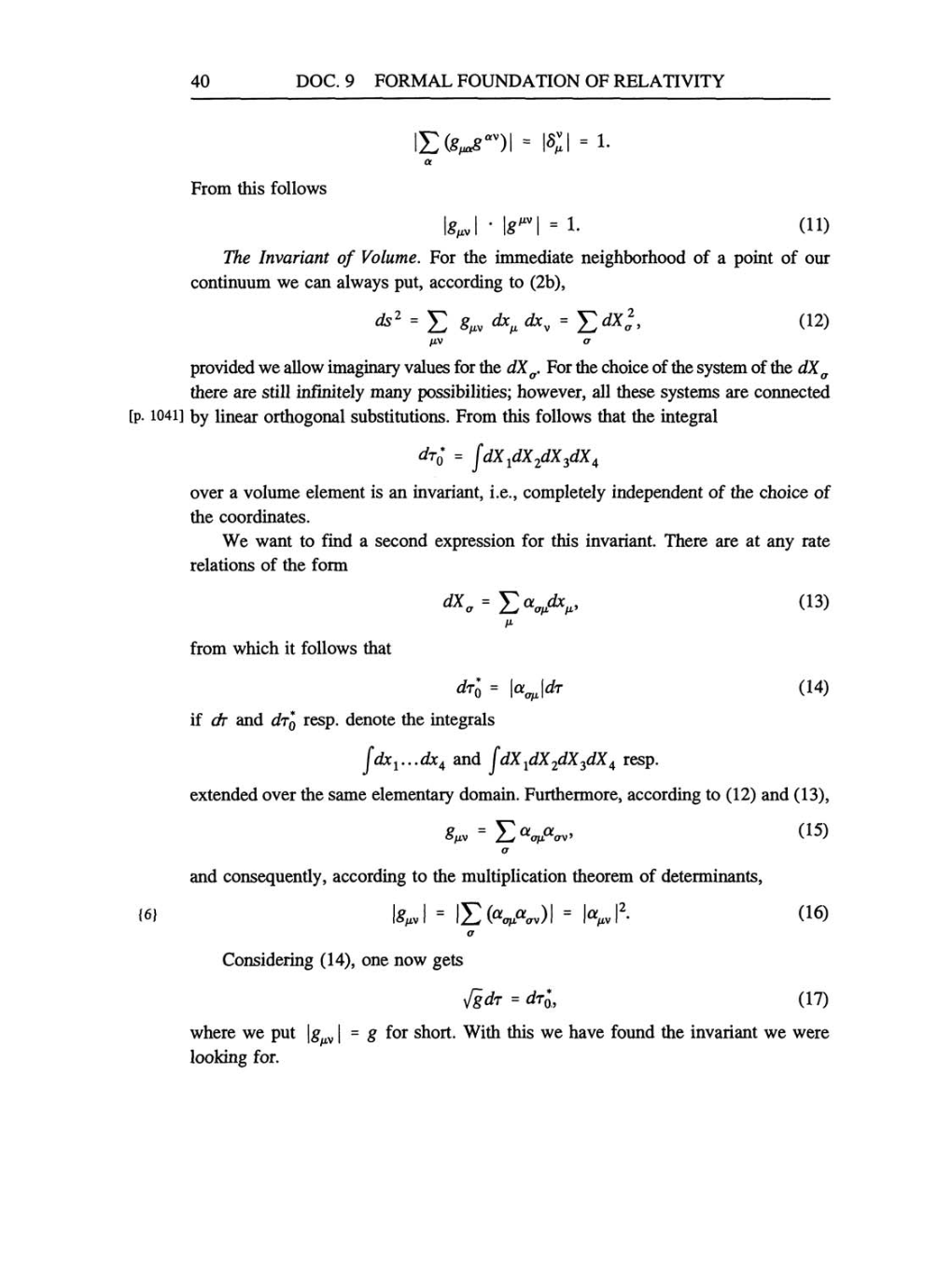40 DOC.
9
FORMAL FOUNDATION OF RELATIVITY
£(*wr)
i
«
I«;
i
=
i.
a
From this follows
\8r»
I
'
\SßV
I
=
I-
(11)
The
Invariant of
Volume.
For the immediate
neighborhood
of
a point
of
our
continuum
we can always put,
according
to
(2b),
fc1
=
£
8^
dxß
dxv
=
Y,dX° (12)
/xv a
provided we
allow
imaginary
values
for the
dXa.
For
the choice
of
the
system
of
the
dXa
there
are
still
infinitely
many possibilities; however,
all
these
systems
are
connected
[p.
1041]
by
linear
orthogonal
substitutions. From this follows that the
integral
dr*
=
fdX1dX2dX3dX
over a
volume element
is
an invariant,
i.e.,
completely independent
of the choice
of
the coordinates.
We
want to
find
a
second
expression
for this invariant. There
are
at
any
rate
relations
of the form
dXa
=
£
(13)
from which it follows that
dTo =
(14)
if
dr and
dr*0
resp.
denote the
integrals
fdx1...dx4
and
JdX1dX2dX3dX4
resp.
extended
over
the
same elementary
domain.
Furthermore,
according
to
(12)
and
(13),
=
Ev«v
(15)
a
and
consequently, according
to the
multiplication
theorem
of
determinants,
{6}
M
=
lEKAnJI
=
Kvl2-
(16)
a
Considering (14), one now
gets
fgdr
=
dr;,
(17)
where
we put
\guv\
=
g
for short. With this
we
have found the invariant
we were
looking
for.
